If you’re on the Rio Grande Valley Butterflies Facebook page, you’ll know how enticing it is to see what’s happening at the National Butterfly Center south of Mission.
I’d last visited the center 10 years ago when it consisted of little more than a tiny house, large palapa-pavilion, a few-dozen host plants and two picnic tables over-looking a bird and butterfly feeding grotto.
It was intimate, shady and peaceful to sit at a picnic table and watch the entertainment. I’d put my elbow on the table and prop my camera with telephoto lens on the palm of my hand and capture oh so many birds and butterflies as they came to the feeders.
Those were my first lessons in bird and butterfly identification when I lived in Pharr. Two gentlemen seemed to be permanent fixtures at the butterfly park and didn’t tire of helping me learn the identity of the big and small-winged creatures I was collecting on my camera.
Recent Facebook uploads had left me pining for the days when I lived close to the park.
Jump forward to last week when a Winter Texan friend from Manitoba wanted to visit the butterfly center. Off we went to see caterpillar, chrysalis and emerging red-bordered pixie butterfly opportunities that were being highlighted on the center’s Facebook page.
The center’s young guamuchil tree, Pithecellobium dulce has had equally popular postings — it’s a host plant for the flashy red-bordered pixie butterflies.
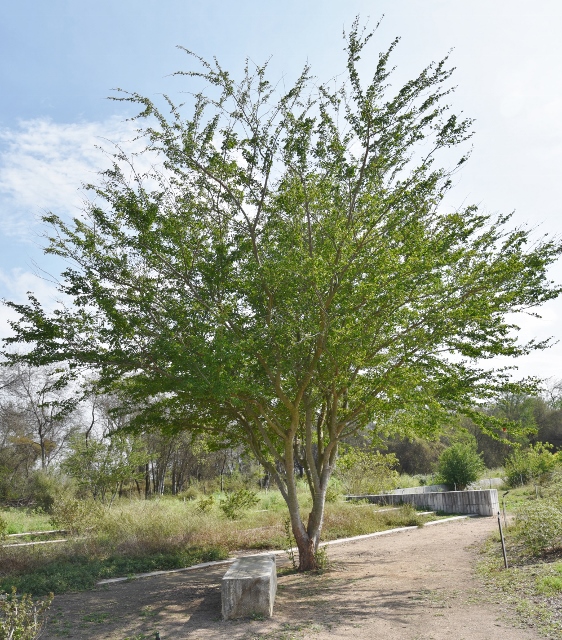
The tree trunk is covered in chrysalises and shells left by emerged red-bordered pixie butterflies.

Guamuchil is native to the Pacific Coast and adjacent highlands of Mexico, Central America and northern South America.
It seems to do ok in the Valley. It’s fast-growing, can grow from 20 to 50 feet tall with a five-foot spread, hardy, low water requirements and grows in dry soil from clay to caliche.
A Fabaceae family tree, it has white frilly blooms in summer and by fall, twisty fat green pea pods turn bright red when ripe. Birds love the seeds and — as birds will do — help with propagation, labeling guamuchil as a possible candidate for being invasive, according to some research.
Expansion of the National Butterfly Center during the last 10 years is remarkable. We walked all the trails, marveled at the dozens of butterfly species still in residence even toward the end of January.
The center’s goal is to keep butterflies happy. They even feed them with a banana brew and give out the recipe:
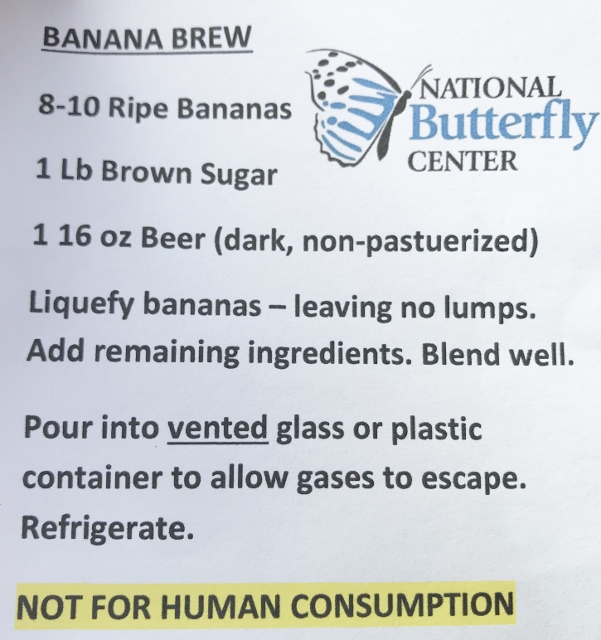
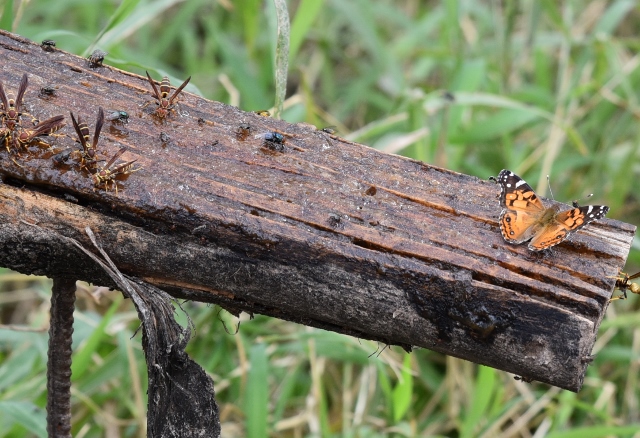
A painted lady butterfly sits on one end of an elevated log that’s been painted with the brew, while wasps and flies also get their fill of the brew.
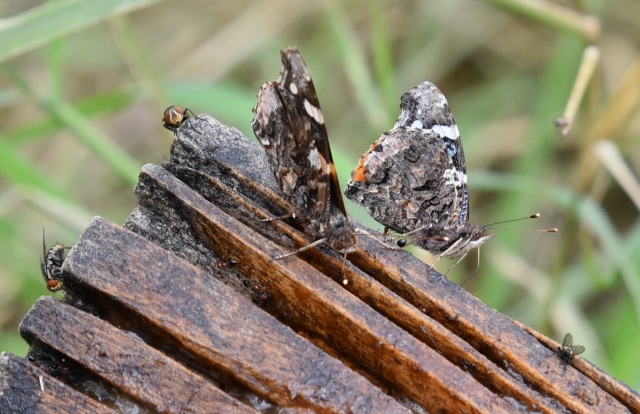
On the opposite end of the log, are a painted lady and a red admiral butterfly.
A fun surprise captured our attention by bobbing up and down as we approached the upper trail leading into the woods.

Deeper along the upper trail, a brown thrasher helped itself to banana brew on yet another log on a pole.
An active tiny gray bird had a lively conversation with us while we stood a mere two yards away. I was quite excited. I’d never seen a bird like it before. It had flashes of bright navy-blue when it flapped its wings and had a two-toned gray body. I managed to capture a really crude image as it zipped back and forth on the branches.
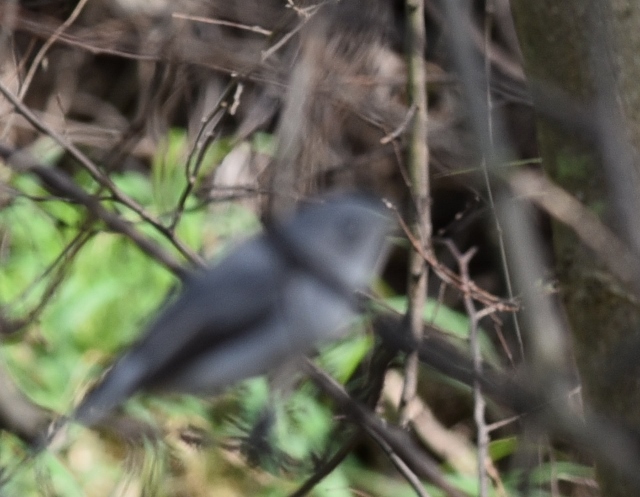
Later, a staff member said it sounded like one of their blue-gray gnatcatchers. Believe it or not, thanks to a local expert birder who tentatively confirmed that possibility from the above photo. If anyone could ID a bird by just a flash appearance, or in this case, a really bad photo, it would be Arroyo Colorado Audubon Society President Norma Friedrich.
A katzenjammer of chachalacas ignored us as they played tag from tree to tree.
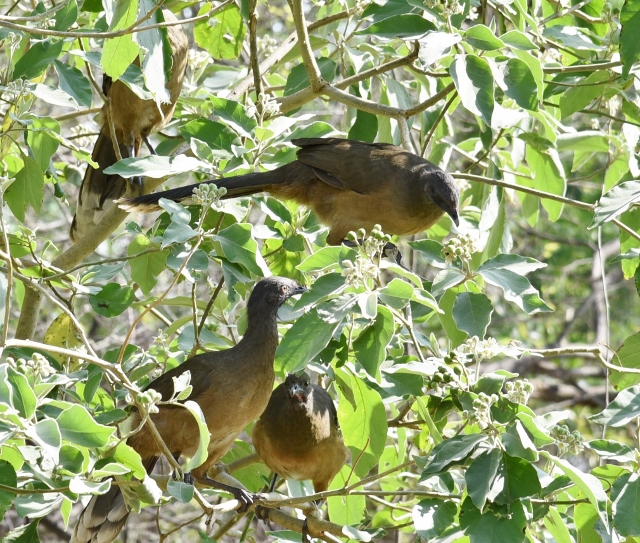
My friend and I spent three hours wandering the trails and gardens. You can’t get lost. The large white structure of the Visitor’s Pavilion is reassuringly always in view. Along the ravine at the upper trail, distant gun fire is evident. Don’t be alarmed, the U. S. Border Patrol has a sunken firing range a ways off. Although within hearing distance, the park is safe from straying bullets, we were assured. Military helicopters seemed to be on training maneuvers the Sunday we visited the park, again, nothing alarming.
Interesting developments are off on little side paths from the upper trail, like this unique and clever simple bird blind.
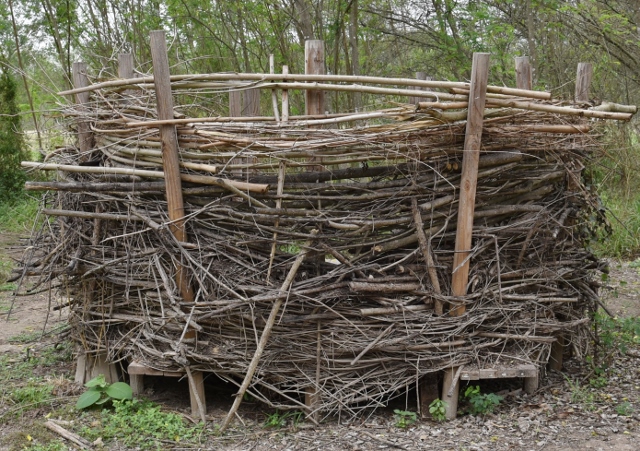

Below, an opened-frame structure sporting chicken wire seems an excellent plan to display native vines.
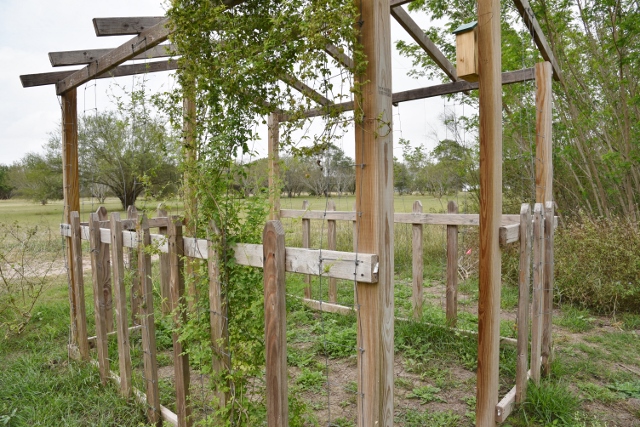
One path leads to a small corral with a big surprise — Spike, a resident turtle that’s well cared for.
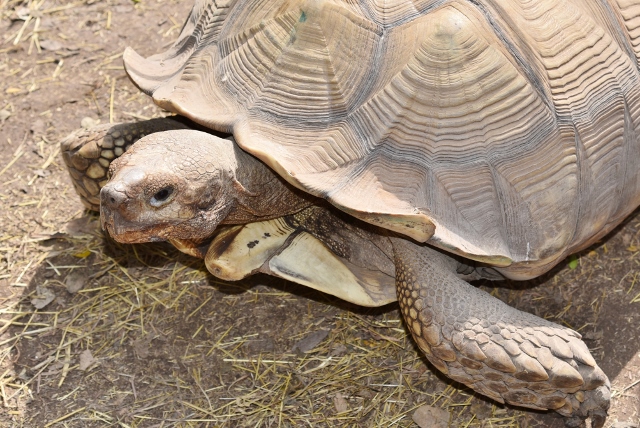
We ended where we started, by two large trellises covered in rampant blooms of Mexican flame vine (Pseudogynoxys chenopodioides), just outside the Visitor’s Pavilion and busy with nectaring butterflies and bees. Not a native plant, but a splendid bloomer through much of the year.
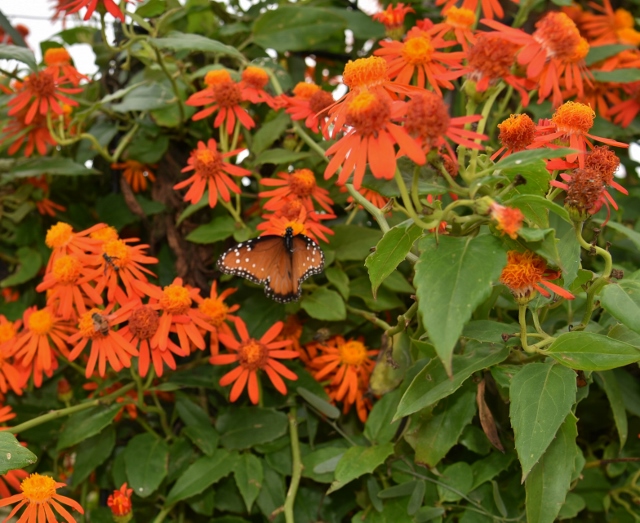
All you road-trip and gift-shop aficionados, grab a couple friends, pile in a vehicle and head out to the National Butterfly Center. On the way home, take the Ware exit to the mall north of the highway. Check out Zoe’s Kitchen — awesome Mediterranean and Greek food.

The National Butterfly Center is at 3333 Butterfly Park Drive, Mission, TX 78572, off Military Highway a mile west of Bentsen-Rio Grande Valley State Park. 956-583-5400
Visit their website for a map to the center and link to their Facebook page.